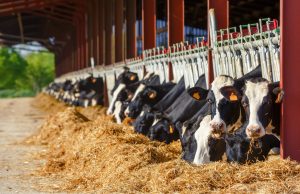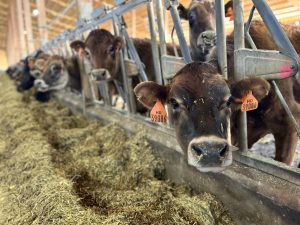
“This is potentially a sign that the market is expecting prices to go up with buyers locking in low prices,” Rural Bank says in a commodity overview. “But it’s still too early to say whether this is a blip in downwards trajectory of global prices, or the start of an upward trend.”
Rural Bank says Australian farmgate milk prices are promising. “With a low domestic pool, processors were already going to have to compete to secure supply. Fonterra has recently stepped up their offering with farmgate prices averaging AUS$9.55 (US$6.60) per kg milk solid, and Coles is offering longer-term contracts at AUS$12.05 (US$8.32) per kg MS in order to keep consumer prices steady.”
Rural Bank emphasised that contract step-ups this late in the season bode well for opening farmgate prices, which should start being announced in the coming months. “The main headwind for farmgate prices is pressure from global trade. Should global prices continue to appreciate, Australian farmgate milk prices are likely to remain at or above AUS$10 (US$6.91) per kg MS.
ALSO READ: A quick stop at Thailand’s dairy sectorIn Thailand, the main sources of raw milk production are concentrated in the central, northeast, and northern regions. Like any other sector, the dairy sector in Thailand also has some challenges. However, with collaboration within the sector there are some great strides being made to develop it further. Here’s a quick glance at Thailand’s dairy sector. Read more…
Australia milk production
According to a recent analysis of Red Sky Agricultural, milk production in Australia could potentially drop below 8 billion litres for the first time in 3 decades. Australian milk production this financial year was tracking well below the previous 3 years and that trend is likely to continue, Red Sky says. Red Sky forecasts a 7% drop in production in the current 2022-2023 season, continuing an ongoing trend throughout this century.
The head of Saputo Australia, Lino A Saputo, has said the biggest challenge for Australia’s milk processing sector is a long-term decline in milk supply. “The dairy pool has been declining over the course of the past 3 years,” Saputo said during a press conference. “In fact, it’s been declining since my first trip out here in Australia in 2001. Then the country was producing about 11 billion litres of milk.”
Saputo sees the production and development of high-value products as one of the solutions to this problem. Saputo has announced an AUS$20 million (US$13.7 million) investment at its Smithton plant in north-west Tasmania. The new plant will be producing cream cheese.
New Zealand support for dairy
In New Zealand, DairyNZ is offering regional support for farmers who have experienced extensive damage to farms and homes from recent wind and floods. The focus is on ensuring animals are fed, watered and comfortable, while putting together a plan with the New Zealand government. Farm performance general manager, Sarah Speight, says for some farmers, the end of the season will be difficult if they are very badly affected.
ALSO READ: Reducing zoonotic disease transmission in dairy farmsZoonotic diseases are a significant public health concern and an occupational risk for farm workers who are in regular contact with dairy cattle. In addition, increased zoonotic infections decrease dairy farm labour force productivity. Therefore, it is essential from a public health and economic perspective to reduce the emergence and transmission of zoonotic diseases by using effective biosecurity measures. Read more…
US dairy exports
In the US, dairy exports were outstanding again in 2022, with record shipments proving to be the key demand driver for US milk. For a 3rd consecutive year, the US dairy industry set a record for the volume of dairy products exported on a milk solids equivalent basis. The current record surpasses 2.4 million mt. That is the equivalent of over 18.14 billion kg of raw milk, 18% of the US milk supply. For the 5th time in the last 6 years, US exports grew by more than domestic consumption.
EU dairy trade with Indonesia
The European Dairy Association recently met with representatives from Indonesia to discuss the dairy trade relationship between the EU and Indonesia. The Indonesian market, with more than 270 million consumers, offers huge potential for European dairy exports as well as for EU operators that are already active in the country. Indonesia is set to facilitate this further through a tax allowance facility. Ongoing negotiations on a free trade agreement between the EU and Indonesia has the potential to even further boost the economic relationship.

























